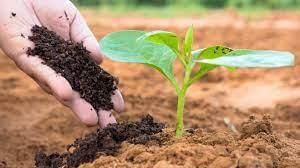Test:Soils of India- 1 - Class 4 MCQ
10 Questions MCQ Test - Test:Soils of India- 1
State whether the following statement is True or False:
Mountain soils are found on the slopes of mountains and are very fertile for growing crops.
| 1 Crore+ students have signed up on EduRev. Have you? Download the App |
When plants, animals, and other organisms die, they break down and become part of the soil. What is this part of the soil called?
State whether the following statement is True or False
Soil erosion is the process of carrying away soil.
Soil is the upper layer of the earth composed of loose surface material. It is a mixture of many substances including many minerals, remnants of plants and animals, _____ and air.
What type of soils are found in the basins of Sutlej, Ganga, and Brahmaputra rivers?
State whether the following statement is True or False:
Cotton grows best in black soils.
Planting of trees and grass to cover and bind the soil with their roots to prevent erosion is called __________________.
Which of the following soil conservation methods involves changing a steep hill into smaller, flatter fields?



















